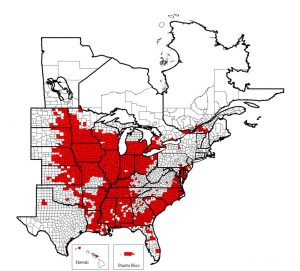Tips to help you make fungicide decisions
The following is posted on behalf of Dr. Nathan Kleczewski, Field Crops Pathologist for Growmark. This content is from the Field Crop Disease Hub webpage Dr. Kleczewski curated.
Every year we hear about fungicides, and their utility in agronomic production systems. Indeed, these products can be an extremely useful tool to prevent yield-related losses resulting from fungal diseases. However, reduced commodity prices are making it crucial for producers to minimize inputs in order to maximize profits. …






